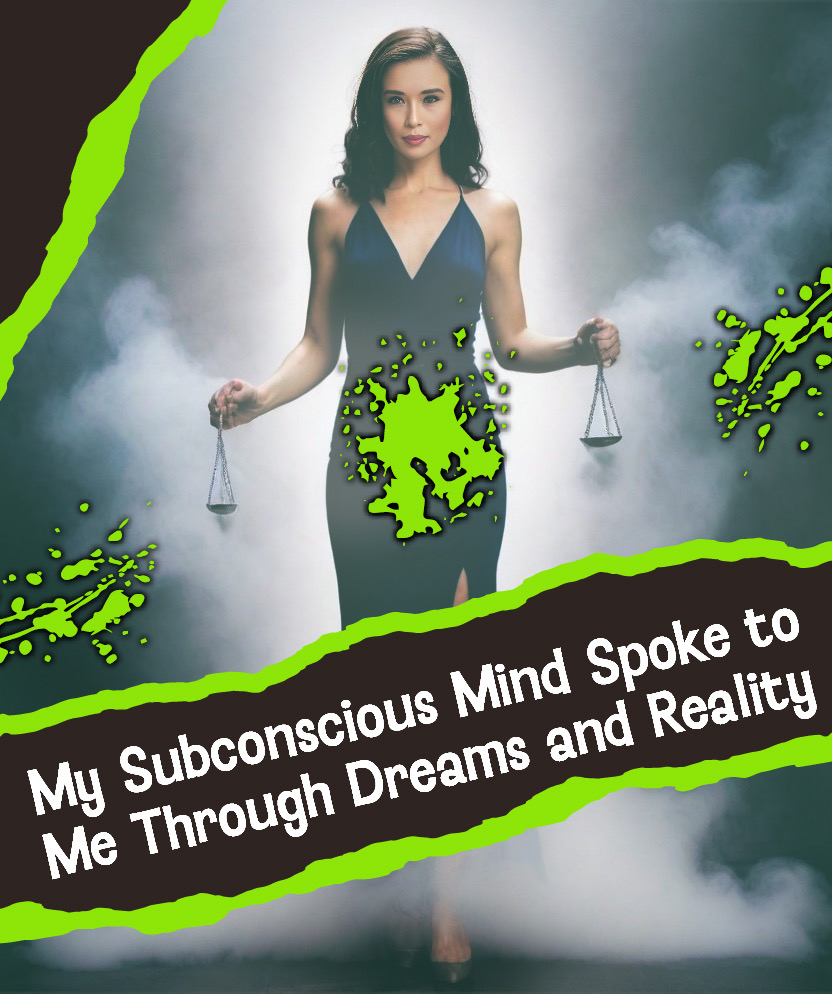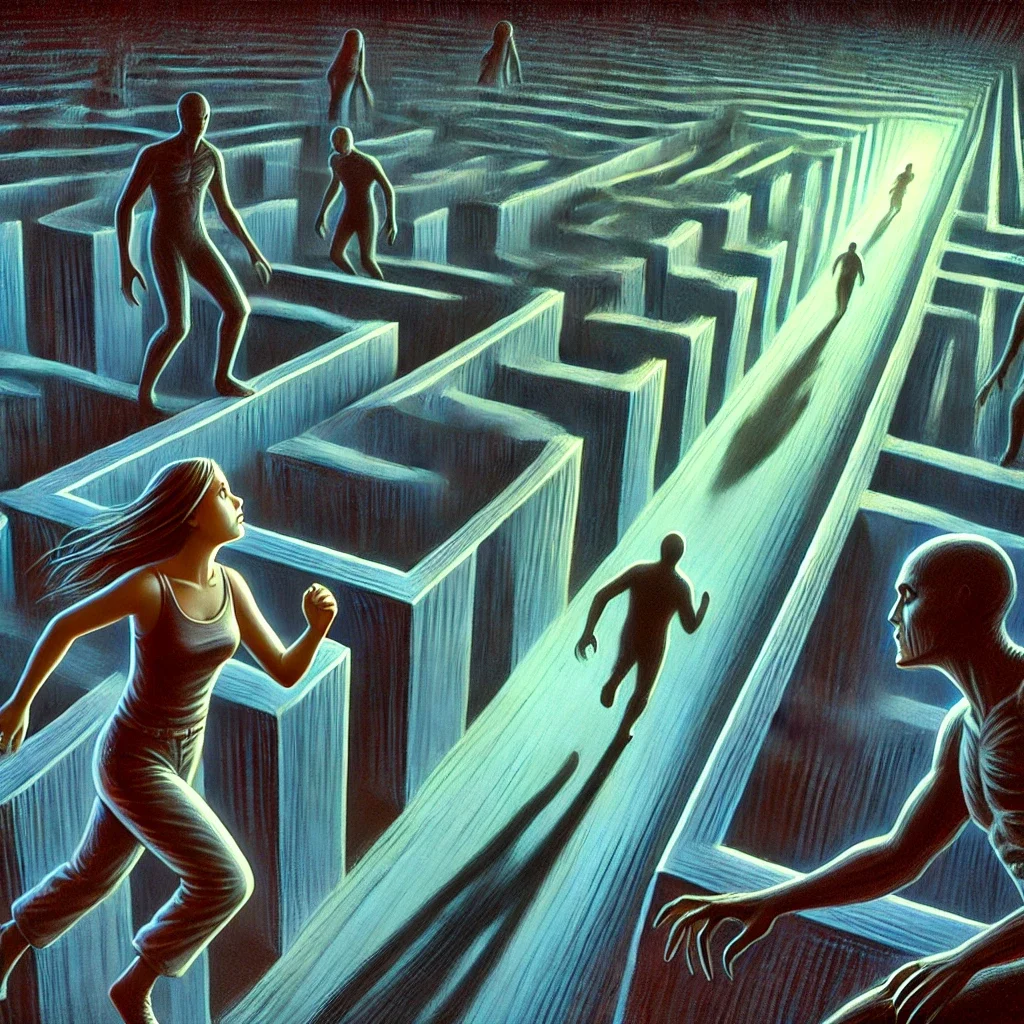This morning, while I was in a half-awake, half-asleep state, I experienced a vivid visualization. I saw black dirt clinging to my body and slowly falling away. It felt like a mix of imagination and dreaming. As the dirt cascaded off, I experienced a profound sense of relief and renewal. This powerful image deeply resonated with me, as if my subconscious was signaling a significant transformation happening within me.

The Weight of Nightmares
For the past few weeks, my dreams have been filled with intense emotions—rage, revenge, and pain. Each night, I found myself entangled in scenarios where anger and hurt dominated my experiences.
One recurring dream involved a confrontation with a man where heated arguments would escalate into physical altercations.

In another dream, I found myself in a dark, abandoned house, seeking revenge against unseen enemies who had wronged me.

These dreams left me feeling drained and troubled upon waking. Despite trying to find peace during the day, my nights were a battleground of unresolved feelings. The themes of my dreams seemed to reflect a deep-seated inner turmoil, where my subconscious mind was grappling with feelings of betrayal, injustice, and unresolved anger.
Another dream had me trapped in a labyrinthine maze, constantly running from shadowy figures.

The sense of fear and helplessness was palpable, leaving me with a lingering anxiety each morning. I also dreamt of standing in the midst of a storm, with violent winds and torrential rain battering me from all sides, symbolizing the chaos and emotional upheaval in my life.

The Turning Point
Yesterday, I made a significant decision for my well-being. I resolved to no longer tolerate behaviors and influences that made me feel bad about myself. It was a commitment to honor my self-worth and prioritize my mental health. This decision felt like a necessary step toward reclaiming control over my life and emotions.
The Black Dirt: A Symbol of Cleansing
The visualization of black dirt falling off my body seemed to symbolize this decision. It represented the shedding of negativity and the release of burdens that had been weighing me down. As the dirt fell away, I felt a sense of liberation, as if I was cleansing myself of toxic energy and making room for healing and positivity. The sensation was almost tangible—I could feel the weight lifting off my shoulders, and my body felt lighter and more at peace.

In my mind’s eye, I saw the black dirt representing the accumulation of hurtful words, harmful actions, and emotional scars. As it fell, the ground around me absorbed it, turning it into fertile soil from which new growth could emerge. This transformation reinforced my belief in the possibility of renewal and growth from even the darkest experiences.
Understanding the Symbolism
The black dirt can be seen as a metaphor for the emotional and psychological grime accumulated from negative experiences and unresolved conflicts. Its falling away signifies a process of purification and renewal. Here are some interpretations of this powerful imagery:

- Liberation from Burdens: The dirt represents the emotional baggage I’ve been carrying. Its removal signifies freeing myself from these burdens and moving towards emotional clarity and freedom.
- Empowerment and Control: This visualization underscores my newfound empowerment. By actively choosing to discard what harms me, I am taking control of my life and emotions.
- Inner Healing: The act of dirt falling away reflects an internal healing process. It indicates that I am beginning to heal from past wounds and am ready to embrace a fresh start.
- Symbol of Transformation: The visualization represents a metamorphosis. Just as a snake sheds its skin to grow, I am shedding these negative elements to transform into a stronger, more resilient version of myself.
- Rebirth and Renewal: The falling dirt can also symbolize a rebirth, akin to a phoenix rising from the ashes. It signifies a new chapter in my life, marked by growth and positive change.
Theoretical Perspectives
Several psychological theories can help explain the meaning and significance of my dreams and visualization:
- Freudian Theory: Sigmund Freud, the father of psychoanalysis, posited that dreams are a manifestation of our deepest desires and anxieties, often rooted in childhood experiences. According to Freud, my dreams of rage and revenge might represent repressed feelings and unresolved conflicts that are surfacing in my subconscious. Freud also believed that visualizations and dream symbols often serve as a form of wish fulfillment, where the unconscious mind expresses desires that the conscious mind might suppress.
- Jungian Theory: Carl Jung, a Swiss psychiatrist, believed that dreams are a way for the unconscious mind to communicate with the conscious self. Jung introduced the concept of archetypes and the collective unconscious. In Jungian terms, the black dirt could symbolize the ‘shadow’—the parts of myself that I have suppressed or rejected. The process of shedding this dirt might represent integrating these shadow aspects, leading to personal growth and wholeness. Jung also emphasized the role of dreams in the process of individuation, where one becomes aware of and reconciles different aspects of the self.
- Cognitive Theories: Cognitive psychologists view dreams as a way for the brain to process information and emotions from daily life. From this perspective, my dreams might be a way for my mind to process the intense emotions and experiences I’ve been facing, allowing me to work through them in a safe, symbolic manner. Cognitive theories suggest that visualizations like the one I experienced serve to help the brain make sense of complex emotions and scenarios, promoting mental clarity and emotional balance.
- Stress and Coping Theory: This theory suggests that dreams are a reflection of our current stressors and coping mechanisms. The intense emotions in my dreams might be my mind’s way of dealing with recent stress and anxiety. The visualization of shedding black dirt can be seen as a coping mechanism, helping me to manage and release built-up stress. This theory aligns with the idea that visualizations and dreams provide a means for emotional regulation and psychological resilience.
- Neuroscientific Perspectives: Neuroscience explores how the brain’s activity during sleep influences dreams and visualizations. Studies show that the brain’s default mode network, active during rest and introspection, might be responsible for the generation of dream imagery and symbolic content. The black dirt visualization could be the brain’s way of creating a visual metaphor for the emotional cleansing process, reflecting changes in neural pathways associated with emotional regulation and stress reduction.
Moving Forward: Embracing Self-Care and Boundaries
This experience has illuminated the importance of self-care and setting healthy boundaries. Here are some steps I am taking to continue this journey of healing and empowerment:

- Focusing on Self-Care: I am dedicating time to activities that nurture my physical, emotional, and mental well-being. Whether it’s practicing mindfulness, engaging in creative hobbies, spending time at the gym or spending time in nature, self-care is now a priority.
- Establishing Boundaries: I am reinforcing healthy boundaries in my relationships. This involves ensuring that my needs and feelings are respected and that I am surrounded by positive influences.
- Seeking Support: I am reaching out to friends, family, and professionals for support. Sharing my experiences and receiving validation helps me navigate my emotions and reinforces my resolve.
- Personal Growth: I view this experience as an opportunity for personal growth. Reflecting on what I’ve learned about myself and my values is helping me build a stronger, more resilient self.
- Positive Visualization: I continue to use positive visualization techniques. Imagining myself in peaceful, fulfilling environments reinforces my goals and aspirations, helping me stay focused on my path to healing.
- Mindfulness and Meditation: Incorporating mindfulness and meditation practices into my daily routine has helped me stay grounded and centered. These practices allow me to acknowledge and release negative emotions, fostering a sense of inner peace and clarity.
- Creative Expression: Engaging in creative activities such as writing, painting, drawing and graphic design has provided a valuable outlet for my emotions. Recently, I have begun incorporating graphic design into my writing, much like this article. Additionally, writing music has become a powerful tool for expressing my emotions and finding inner peace in melodies and lyrics. These creative pursuits allow me to process and understand my feelings, transforming my suppressed emotions into something meaningful and beautiful.
A Journey Towards Inner Healing
The visualization of black dirt falling away was a profound reminder of my inner strength and capacity for healing. By acknowledging and addressing the negativity in my life, I am taking meaningful steps towards a brighter, more empowered future. Each day, I am shedding a little more of the darkness, embracing the light within, and moving forward with renewed hope and determination.
Through this journey, I have come to realize that our subconscious minds often speak to us in symbols and metaphors. By paying attention to these messages and taking conscious steps to address the underlying issues, we can embark on a transformative path of self-discovery and healing. This journey is not just about letting go of the past, but also about embracing a future filled with possibility and growth. Each day, as I continue to cleanse myself of negativity, I am becoming more attuned to the strength and resilience within me, paving the way for a life of peace, joy, and fulfillment.
References
- Freudian Theory:
- Freud, S. (1900). The Interpretation of Dreams. Macmillan and Co.
- “Sigmund Freud’s Theories.” Simply Psychology, www.simplypsychology.org/Sigmund-Freud.html.
- Jungian Theory:
- Jung, C.G. (1964). Man and His Symbols. Dell Publishing.
- “Carl Jung’s Theories.” Verywell Mind, www.verywellmind.com/carl-jung-biography-1902-101989.
- Cognitive Theories:
- Domhoff, G. W. (2003). The Scientific Study of Dreams: Neural Networks, Cognitive Development, and Content Analysis. American Psychological Association.
- “The Cognitive Theory of Dreaming.” Sleep Foundation, www.sleepfoundation.org/how-sleep-works/theories-about-why-we-dream.
- Stress and Coping Theory:
- Lazarus, R. S., & Folkman, S. (1984). Stress, Appraisal, and Coping. Springer Publishing Company.
- “Understanding the Stress and Coping Theory.” Psychology Today, www.psychologytoday.com/us/basics/stress.
- Neuroscientific Perspectives:
- Hobson, J. A., & McCarley, R. W. (1977). The brain as a dream state generator: An activation-synthesis hypothesis of the dream process. The American Journal of Psychiatry, 134(12), 1335-1348.
- “The Neuroscience of Dreams.” ScienceDirect, www.sciencedirect.com/science/article/pii/S2352154617300124.


